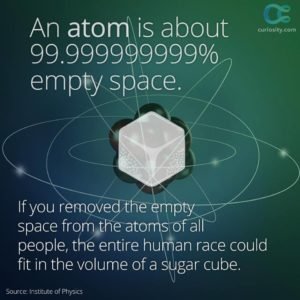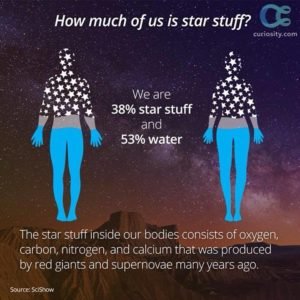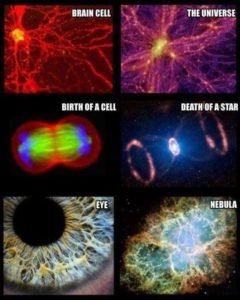by Susan Dean | Feb 6, 2018 | Animals, The Human Body
 NOSES
NOSES
Our nose is part of the respiratory system in our body. There are different kinds of respiratory systems in different kinds of life such as in a person (lungs), a fish (gills), a plant (stoma) or an amoeba (cell wall). There are many different shapes of noses located in different places on a body with different abilities to smell.
Our nose allows us to breathe air, it aids in digestion, speaking and smelling. The organs of smell are the nasal cavity, sinuses, hard palate, soft palate, epiglottis and the windpipe (trachea). Our nose is our first air filter and moistens and warms the air. The nasal cavity is a good humidifier and gets moisture from mucus, tear ducts, and sinuses. The blood in the membrane of the nasal cavity warms the air. The hairs and bony ridges trap the largest particles.
The epiglottis is protection for the respiratory system and is a trap door at the root of the tongue that closes over the trachea and keeps us from choking or breathing in food. The soft palate closes off the nasal cavity.
There are mucus glands in the wall of air passages and cilia that trap dirt and try to move it out (1 inch a minute) – as mucus making buggers. HAIRS grow in the nose and help filter dust from getting in lungs. The bronchial tree has mucus membranes that produce sticky mucus that traps smaller particles. Tiny cilia sweep the mucus to the mouth and nose to be swallowed, coughed up, or blown or sneezed out.
SMELL
Smelling is one of our five senses. How does smell affect us? A pizza smell can make your mouth water and start digestive juices, or smoke can warn us of a fire or something rotten we shouldn’t eat. Sense organs contain double-ended receptor cells. The receptor cells in the nose collect information and send electrical signals to the brain where they are converted to information and knowledge. Smell comes from the chemical particles in the air. Some animals and Insects can smell for miles. People have a very poor sense of smell.
What makes up our nose? 2 Nostrils separated by septum of cartilage, mucus glands and cilia (hairs). There is a postage stamp size area of receptor cells in roof of the nose that sends signals from olfactory rods in the mucus to olfactory BULB and to brain. For us to smell something, a signal from a receptor cells in the nose travels to the olfactory rods of mucus to the olfactory bulb (above the roof of the nasal cavity) and is sent to the brain – the cerebral cortex for perception.
Odors stimulate the brain to respond automatically affecting other systems. Food odor stimulates appetite / saliva. Disagreeable odors may produce gagging and vomiting. Our sense of smell helps taste buds to warn you of spoiled food. If you want to identify how something smells you give it a little sniff.
Do you have a NOSE? How many? We have one nose and 2 NOSTRILS or NARES. Do you have a snout? What has a snout, a muzzle, a trunk, gills, or blowhole? Let children answer and show them some pictures or toy examples of animals with different noses. Remind them that plants breathe air too! You can show them the picture of the stoma on the underside of a leaf.
What do noses do? Where are noses located?
1. They are a PASSAGE for air. We breathe 15 times a minute. Our body loses heat and water with each breath. We see the moisture in our breath when the air outside is cold.
2. MOISTENS the air
3. FILTERS the air
4. SMELLS the air. Smells come from chemical particles in the air. Some animals and insects can smell for miles. Ex. Dogs
The Nasal Cavity amplifies sound along with the throat, mouth, and sinuses. Noses of some animals push, pull, lift, reach and root for food.
ANOSMIA is odor blindness.
Objectives: Children will know that animals have different kinds of noses for breathing and some of them use them for other things too.
Children will know that plants also breath air through stoma in the leaves
Children will know some of the ways our nose helps us.
Children know that a signal is sent from the nose to the brain for identification.
Model of the nose
Materials: Models of animals with different noses.
ex. Bird, elephant, anteater, pig, fish, whale, camel, seal.
Picture of stoma in leaf
Chart showing nose and respiratory system
Make some smelling bottles with cotton balls and oils or powders or plants like lemon, mint, chocolat, vanilla, lavender etc.
(Remember scratch and sniff books!)
NOBODY CHOSE HIS NOSE
EACH IS DIFFERENT AS YOU MIGHT SUPPOSE
BUT WHATEVER THE CASE, IT’S THERE ON THE FACE,
AND NOW YOU KNOW ALL THE NOSE KNOWS!
Take a look at the noses of a few other animals!



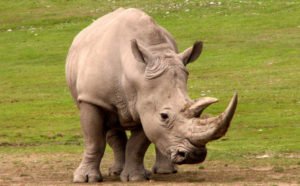
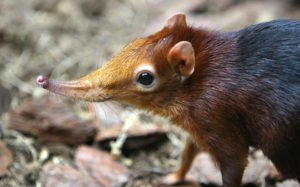


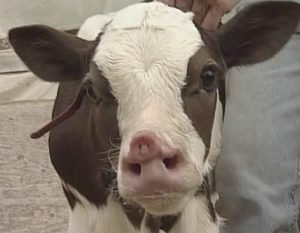

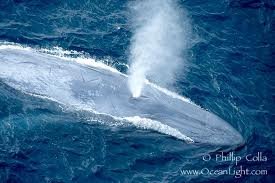
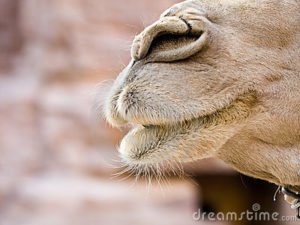

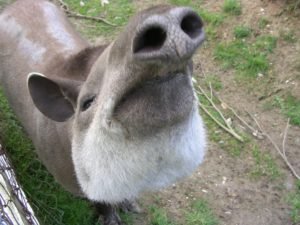

by Susan Dean | Feb 6, 2018 | Animals, The Human Body
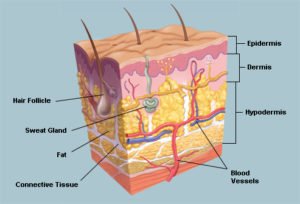
Let’s begin with skin that wraps you up and keeps you in,
From the top of your head to the soles of your feet,
It helps keep out cold and helps hold in heat.
It’s a colorful covering germs can’t get through,
Skin protects the inside of you.
Because we have skin we can touch and feel
Things in the world around us!
Our skin is our largest organ and allows us to feel things. It protects our body and is different colors from pale white, to red, yellow, olive, brown and dark ebony. The color of skin is controlled by melanin. The darker the skin – the more melanin is in the cells. Melanin protects skin from sunburn. Some people have freckled skin and some people have no melanin at all and are very white and this is called albino. You can also have special birthmarks or moles on your skin.
Our skin is alive! Blood feeds the skin the oxygen and nutrition that it needs to stay alive through tiny blood vessels. In a lifetime we shed about 45 pounds of skin
LAYERS OF THE SKIN:
EPIDERMIS The skin you see. Your epidermis is always showing! New cells are always forming underneath. You could have a new epidermis in 2 weeks to 2 months. What you see are dead skin cells that flake off.
How the outside epidermis layer helps us:
1. Our first defense against bacteria.
2. Keeps moisture in our body
3. Holds the body together
DERMIS The dermis is thicker than the epidermis and includes the sebaceous or sweat glands that make sebum (the skin’s natural oil that makes skin waterproof!), oil glands, nerve endings, heat, cold, and pressure sensing cells. There is a fat layer that acts as a shock absorber, insulation, and stores energy from food. Hair grows from a follicle canal and oil is produced to keep it soft and flexible.
Blood vessels and fat help control the body’s temperature. We get flushed or red faced when hot and we start to sweat. When we sweat, we cool off and get rid of waste. When we are cold the blood vessels contract and we may get “goose bumps” or when the blood vessels narrow it may make us shiver. You may get rosy cheeks when it’s very cold because blood goes to surface to keep warm
SKIN SAFETY:
The sun can burn skin so we should use sunscreen if we are in the sun a long time.
98.6 is our normal body temperature. Be good to your skin and it will stick close to you! Skin loves to be scrubbed. Always wash cuts and scrapes and dress them if needed. If a cut is deep you may need it sewn up. You may need to get a tetanus shot if you get cut by something that is rusty.
The thickness of skin varies from location to location on an organism. In humans, the skin located under the eyes and around the eyelids is the thinnest skin in the body and is one of the first areas to show signs of aging. The skin on the palms and the soles of the feet is 4 mm thick and the thickest skin in the body. Our fingerprints are individual and all different and used to identify people.
Our skin uses the sun to make vitamin D to help our body build strong bones and teeth.
The skin of our head (our scalp) has about 5 million hair follicles. Hair is made of keratin from protein and our fingernails and toenails are keratin.
Children are usually frightened when they see blood and they need to know that it is OK and that it has cells that fight germs and infections so when the skin is scratched or injured it will bleed some so that germs won’t enter the body. Then white cells in the blood gobble up germs they find and the blood clots forming a scab that gets hard as the skin heals and it falls off. If they understand the role blood plays they will lose their fear.
If you want to let them practice storytelling, let some of them tell about a time when they were hurt.
Many illness and allergies can affect the skin. Some plants like poison ivy can cause rashes and some illnesses like chicken pox can make sores on the skin. I was working in the garden and the sap of the century plant burned my skin. Be cautious and take care of your skin. If you fall or something hits your body you may get a bruise. The area may turn blue from broken vessels that will eventually heal.
Again . . . What does skin do for us?
1. Keeps germs out.
2. Keeps water in.
3. Helps hold the body together.
4. Grows hair.
5. Sweats and cools us off.
6. Makes vitamin D to feed bones and teeth
7. Oils the skin and makes it waterproof.
8. Stores energy.
9. Helps keep us warm.
10. It allows us the important sense of touch that we can feel things like textures and temperatures through our skin
ACTIVITIES:
Let children compare their skin colors.
They can see blood vessels in skin and hair growing from it.
Fur is dense hair and augments the insulation skin provides and may serve as camouflage. On some animals, the skin is very hard and thick, and can be processed to create leather. Reptiles and fish have hard protective scales on their skin for protection, and birds have hard feathers, all made of tough β-keratins. Amphibian skin is not a strong barrier to passage of chemicals and is often subject to osmosis. Have samples of other kinds of skin coverings like, fur, feathers, scales, snakeskin, or toy examples of animals with different coverings like, fur, needles, scales, feathers, or exoskeleton chitonous outside coverings like bugs have.
I have a little feely bag and the kids take turns trying to guess what they feel in the bag without looking. Young children love to do this. You can also create a texture box from fabrics or see if certain colors make them feel warm or cold.
by Susan Dean | Feb 5, 2018 | Animals, The Human Body
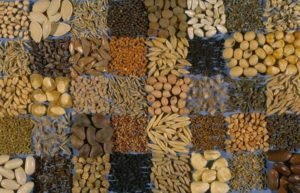
Show children the chart of the food pyramid and ask them the shape of it. Ask them to see the largest part of the pyramid at the bottom. Ask children if they eat grass. Do they eat pasta?
SEEDS FEED THE WORLD.
Hold the ear of corn up and ask them what part of the plant it is; root, stem, leaf, flower, fruit, or seed?
Teach them the song (with rhythm and movements) about the six parts of a plant.
Tell a story about corn. When we pick corn fresh from the plant it is young and tender and delicious, but if we let it stay on the plant it becomes hard and matures into seeds. We can take a seed that looks very dead and plant it in the ground and if the seeds needs are met, it will grow a new corn plant! We can pop the seeds into popcorn, grind them up into grits, or cornmeal to make hushpuppies, muffins or cornbread or grind them fine to make cornflower for tortillas. Let children see a sample of bread and notice that it has holes in it from a gas that forms and makes the bread rise when it is baked They can eat it too!). All kids love bread. You know they say bread is the staff of life.
Pretend to make cornbread and put some cornflower in a bowl, add egg, some milk and a secret ingredient that makes air and the batter rises when it is baked. Show them what happens by doing the experiment creating a gas (Co2) from a solid (baking soda) and a liquid (vinegar). Pour some vinegar in a clear soda bottle. Fill the balloon with some baking soda using a funnel. Show children the funnel and tell them it is used to make a little mouth into a big mouth. Attach the rim of a balloon to the bottle and lift it to let the soda fall making a gas that blows up the balloon.
Materials: Chart of the Food Pyramid, ear of corn, samples of grains (from feed store wheat, barley, oats, rye, rice, corn) Samples of things we make from grains (cereal, popcorn, grits, cornmeal, cornflower, bread, and cookies.) 1 soda bottle, baking powder, funnel, vinegar, and balloon.
Activities: Examine grains from grasses. We make flour, bread, pasta, and cereals from them. Do rhythm exercise and teach the song about plant parts. Give each child a slice of bread to examine the holes in it. Then do the experiment making the reaction of vinegar and soda blow up the balloon. This is what happens when we bake bread, filling it with holes from the air created. Children can plant seeds of grains and with care, see them grow!
by Susan Dean | Feb 5, 2018 | Animals, The Human Body

Content: Plants on Our Plate: Fruits and Vegetbles
Have you been tired and felt like you didn’t have any energy? How do we get energy?
1. OXYGEN from the air we breathe.
2. FOOD we eat gives us energy and nutrients to grow and build a healthy body.
3. EXERCISE to keep systems flowing and strengthen them.
4. REST for the brain to gather chemicals needed for the next day.
Do you eat plants; roots, stems, leaves, seeds? (Many young children will respond no!) We eat all the parts of plants. Remind them about the energizing grains, the group of foods like rice, corn, pasta, bread. Two other food groups good for you to eat are vegetables and fruits. Are plants alive? Yes plants are alive and go from seed to seed growing and multiplying. They breathe; need sun to live, water to drink, and vitamins and minerals from the soil to grow strong. Plants turn the light of the sun to energy! You don’t see plants going to the grocery store for food. Their leaves make their food from sunlight through a process we call photosynthesis. Plants are producers and they feed the planet!
What are the parts of a plant? Say after me; roots, stems, leaves, flowers, fruits, and seeds. Teach children the song about the 6 plant parts. Hold up a vegetable or fruit and let the children tell if it is a fruit or vegetable. Ask what part of the plant is it and let them say if it grows on a tree, vine, or bush. Make up puzzles for the children such as: What is white inside, grows on a tree and can be red, yellow, or green? (apples) What is the difference in processed and unprocessed food? Which is better for you? Fresh raw or steamed vegetables and fruits are best to eat. Ask children to name some of the fruits and vegetables grown in S.C. We get many vitamins and minerals from fruits and vegetables that help our whole body grow strong and healthy.
Activities Show some energy by doing some stretching and energizing exercises. Hand out samples of fruits and vegetables(artificial samples) and let them tell what part of the plant it is and what kind of plant it grows on (vine, bush, or tree) Solve food puzzles. Ex. It is a root and is the color orange. What is it? Children learn the songs “I am a Sprout” and “Six Plant Parts”
Materials: Food Pyramid chart, samples of fruits and vegetables; coconut, broccoli, carrot, potato, celery, apple, leaves. These represent the different parts of a plant.
Books to read: Where Food Comes From by David Suzuki and Barbara Hehner, Growing Vegetable Soup by Lois Elhert
 NOSES
NOSES
















